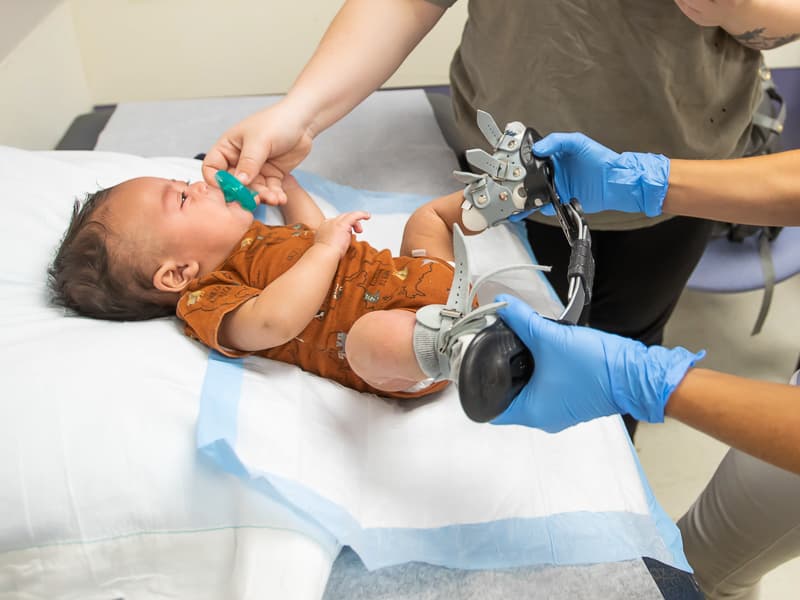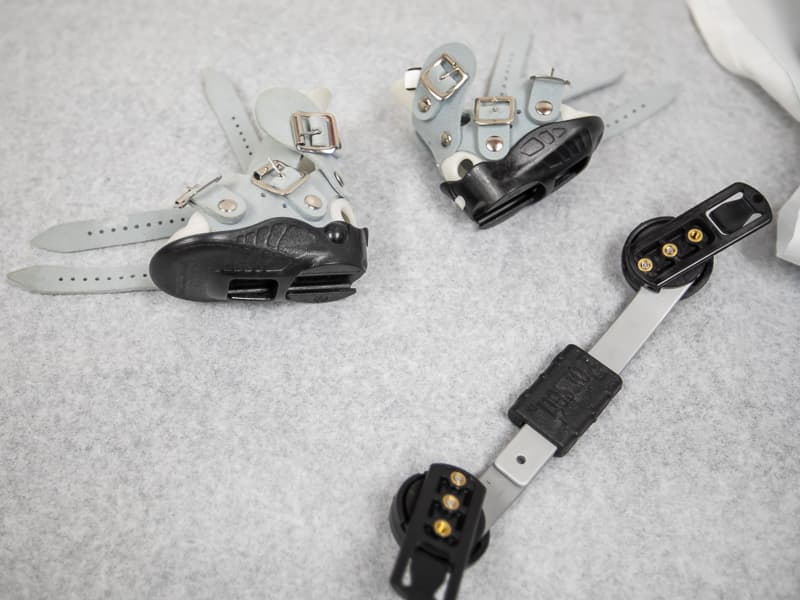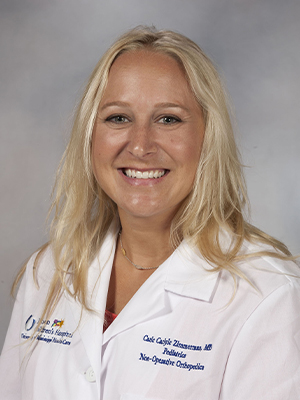Children’s of Mississippi treatment for clubfoot starts before birth

Dr. Catherine Zimmerman has known Memphis Stephenson since before he was born.
The pediatric orthopaedist began seeing Memphis in utero, after his mother, Brianna Stephenson of Florence, was referred to her before Memphis entered the world when it was suspected that he might be born with a clubfoot.
“We had a consultation before Memphis was born, so we could talk about the treatment process,” Stephenson said. “Memphis was born with a right clubfoot.”
A healthy baby, Memphis was ready to begin treatment when he was 2 weeks old.
In the U.S., about one in every 1,000 babies is born with clubfoot, and about half of babies with the condition have it in both feet, according to the American Academy of Orthopaedic Surgeons.

A birth defect that causes a baby’s foot to be turned inward, clubfoot isn’t painful in infancy, but the condition will not improve without treatment. An untreated clubfoot will cause a child to walk with an abnormal gait, leading to pain and arthritis.
Early noninvasive treatment for clubfeet uses the Ponseti method, which consists of gentle stretching and manipulation of the foot, which is held in place with casts that are changed weekly.After this, a small surgery on the Achilles tendon is performed for final correction before moving into the bracing period.
With early treatment, most children born with clubfeet can walk, run and play without the need of major reconstructive surgery.
Memphis was 2 weeks old when he received his first Ponseti cast.

“Memphis did well with the traditional Ponseti casting technique, underwent his tenotomy and was ready for his foot abduction brace in early August,” Zimmerman said.
The brace, often referred to as “boots and bar,” is worn full time for three months. He will then be weaned out of them until he only wears them at night when sleeping, which will happen around his first birthday. Memphis will continue wearing them at night until he’s 4 1/2 to 5 years old.
After a baby is weaned off wearing braces during the day, it can be easy for parents, facing the challenges of raising an active toddler, to forget putting the braces on at night. “Recurrence is real, though,” Zimmerman said.
A child who wears the boots and bar properly through age 4 has a reoccurrence rate of about 6 percent. However, children who stop treatment at 2 have a 70 percent chance of the clubfoot returning, Zimmerman said.
“Treatment for clubfoot has to be followed or it will reoccur 100 percent of the time,” Zimmerman said. “This is why wearing a brace properly and consistently is so important.”
“If the clubfoot returns, we have to start the whole process over again, and there is no guarantee the results will be as good,” she said. “What we want to do is avoid the need for bony surgery on the foot.”
Now 3 months old, "Memphis is doing really well,” Stephenson said. “He’s getting calf muscles from raising his legs with the boots on.”


